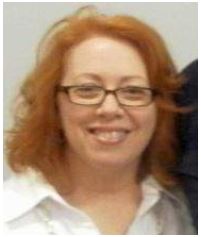Battle Over C-band Space Gearing Up

[May 2018] The FCC regulates a lot more than just broadcasting and cable. Right now, the Commission has begun what may be new rules to share the frequencies used by satellite programmers with other services.
Could this be the end of satellite delivered programming?
It is currently a hot button topic among radio and television engineers and programming staff across the country and, unless you have been living under a rock, you probably have heard at least something about it.
C-band VS 5G
I am talking about the 5G encroachment into C-band bandwidth, and the effects this proposal is having on the broadcast community is as out of control as a runaway train.
In a nutshell, broadband companies like Verizon and Google are putting pressure on the FCC to hand some or all of these frequencies over to major Internet providers for future 5G technology. As part of the process and in an attempt to determine the impact of C-band, the FCC instituted a 90-day freeze on April 19, 2018 regarding applications for new receive-only earth stations (FSS) in the conventional C-band (3.7 to 4.2 GHz).
Currently reports evaluating the feasibility of allowing commercial wireless services to share use of specified frequencies between 3.7 and 4.2 GHz are being submitted to the government. If such sharing is considered feasible, then suitable frequencies will be identified.
Meanwhile, the FCC is also calling on existing Earth stations to be registered ASAP, giving broadcasters until July 18, 2018 to complete the process. This move precedes an expected Notice for Proposed Rule Making (NPRM) on the proposal that would allow 5G to operate within the same frequency ranges as C-band in the US.
A Little C-band History
For decades the broadcast entertainment Industry has relied on the ultra-dependable C-band satellite delivery to provide network programming to radio and TV stations.
There is no other technology than C-band with the constancy of 99.99% broadcast quality. That is why tens of thousands of C-band downlinks are deployed across the United States, transmitting radio and television programming on a daily basis.
However, broadband companies pushing 5G technology are looking to encroach on C-band frequencies. What is more, the FCC is seemingly uninformed as to just how dependent broadcasters and the listeners they represent are on C-band.
The Current Status of C-band
Satellite providers like SES and Intelsat are in conversation with both the FCC and their resellers, sounding the alarm about the impact 5G can potentially have on C-band customers.
At this moment, approximately 1,500 Fixed Satellite Service (FSS) Earth stations are registered, out of some 20,000 dishes, according to industry estimates.
Though they are concerned for current space segment customers, satellite owners are nothing if not pragmatic. The satellite groups have signaled a willingness to work with both the FCC and broadband providers to carve out bandwidth for 5G – as much as 100 MHz.
Potential Problems
What happens if major Internet providers succeed and C-band broadcasters are forced to share some or most of their C-band frequencies with broadband?
Those receiving their programming via C-band can expect to experience severe noise and interference on their networks. Filters may help, but our fear is that the prolific nature of 5G expansion will continually raise the noise floor and that any filter – or combination of filters – will be ineffective. Ultimately, C-band bandwidth will be seriously affected – if not destroyed – by the encroachment of broadband.
American broadcasters have invested billions in the infrastructure of C-band. Spurred by the actions of Broadband providers, the FCC is moving quickly – making it imperative that we, as broadcasters, act immediately, as well.
C-band Next Steps
What should you do first?
Take care of business. If you own one or more C-band downlinks, make sure each one is registered (instructions here!). Again, you have until July 18, 2018 to do so. Currently, there is a$435 registration fee per downlink earth station.
However, if you are a Non-Commercial Educational (NCE) and your FRN indicates this designation, the $435 registration fee should be waived. Will the FCC waive the fee for non-FRN designated downlinks as well?
Perhaps.
If completing the registration process for all your antennas and/or paying the required FCC filing fee for each site is financially prohibitive, the FCC may be willing to consider requests for fee reductions or waivers on a case-by-case basis. Contact your satellite provider to find out more.
It is worth noting that, at this point, registration in of itself does nothing but alert the FCC to the existence of your FSS dish. In of itself, there is no protection from interference, even if you spend the money to do a PCN (Prior Coordination Notice) during the freeze window.
Make Your Voice Heard
Other steps you can take include:
- Contact your FCC attorney and let him or her know where you stand on the issue. The FCC needs to understand that this is an encroachment on a long-established, reliable and viable method of communication.
- Consider contacting your Federal representatives in the US House and US Senate.
- Consider notifying your listeners or viewers about the issue, and encouraging them to contact their representatives in the US House and US Senate.
- Contact the NAB or SBE and voice your concerns and support for any efforts that they will make on your behalf.
– – –
Karen Johnson and her husband / business partner Mark Johnson are principals of LinkUp Communications Corporation, a broadcast integration company based in Panama City, Florida that specializes in satellite technology.
A broadcaster and entrepreneur, Karen has spent two decades championing the power of satellite to deliver broadcast-quality radio and video that is live and immediate. Contact Karen at karen@linkupcommunications.com
